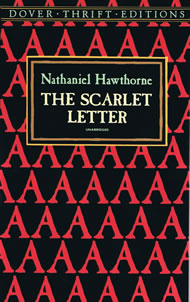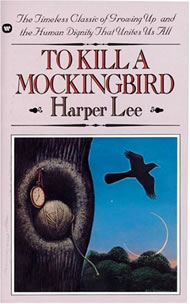 Reading is still a central part of learning, and with the current emphasis on eBooks and 21st century learning in school and campus libraries, it’s hard to imagine any book under restriction. Nevertheless, every year, more books are placed on the American Library Association’s (ALA) “challenged” books list.
Reading is still a central part of learning, and with the current emphasis on eBooks and 21st century learning in school and campus libraries, it’s hard to imagine any book under restriction. Nevertheless, every year, more books are placed on the American Library Association’s (ALA) “challenged” books list.
For many children and young adults, there is no greater pleasure then becoming lost in fictional worlds characterized by colorful people and settings of times past or future…and if there happens to be curse words or a scandalous event, well, that’s all part of the narrative.
Yet, many parents and school and campus staff take exception to some fictional works, presenting “challenges”—formal, written complaints filed with a library or school requesting that a book or other material be restricted or removed because of its content or appropriateness—through the library association’s Office for Intellectual Freedom.
This year (2013), though Fifty Shades of Grey placed at No.4 on the ALA’s challenged books list, a children’s book for bathroom training, The Adventures of Captain Underpants by Dav Pilkey, topped the list at No. 1, while And Tango Makes Three, a story of a child growing up with two same-sex parents, is one of the most challenged children’s books in history—reminding book lovers everywhere that if there’s one genre of book people scrutinize the most, it’s those meant for children and young adults.
In this list, you’ll find 10 of the most widely banned books, some more recent and some old, that are also the most likely to be removed from school and library shelves.
(Next page: 10 banned books)
(Listed in alphabetical order)
1. The Adventures of Huckleberry Finn, Mark Twain, 1884
The first ban of Mark Twain’s American classic occurred in Concord, MA in 1885. Twain’s book is one of the most-challenged of all time and is frequently challenged today because of its “racial insensitivity,” and because it “perpetuates racism.” Other books with similar challenges based on racial issues include Gone With the Wind (Margaret Mitchell, 1936), and Uncle Tom’s Cabin (Harriet Beecher Stowe, 1852).
2. Beloved, Toni Morrison, 1987
This Pulitzer-prize winning novel by one of the most influential African-American writers is assigned to many high school English students. Again and again, parental complaints are lodged against the book because of its violence, sexual content and discussion of bestiality.
3. The Catcher in the Rye, J.D. Salinger, 1951
Salinger’s life masterpiece is frequently removed from classrooms and school libraries because it is “obscene,” “blasphemous,” “negative,” “foul,” and “undermines morality.”
4. Fahrenheit 451, Ray Bradbury, 1953
According to Banned Books Week, rather than ban the book about book-banning outright, Venado Middle school in Irvine, CA used an expurgated version of the text in which all the “hells” and “damns” were blacked out. Other complaints have said the book went against many religious beliefs.
5. The Handmaid’s Tale, Margaret Atwood, 1985
According to TIME Magazine, a superintendent in a school district removed the novel from an Advanced Placement (AP) English course, claiming that the text, “was sexually explicit and offensive to Christians.” I Know Why the Caged Bird Sings (Maya Angelou, 1969) faces similar challenges based on sexual content, which includes Angelou’s account of being raped as an 8-year-old.
6. Harry Potter, J.K. Rowling, 1997-2007
Five installments of the seven “Potter” fantasy novels have attracted particular scorn, with the “Chamber of Secrets (1998),” for instance, removed from Bridgeport Township, Mich., public schools in 2000 for “promoting witchcraft,” according to the Banned Books Resource Guide.
7. The Kite Runner, Khaled Hosseini, 2003
Many parents and schools have cited challenged based on “homosexuality,” “offensive language,” “religious viewpoint,” and sexually explicit content.
8. The Scarlet Letter, Nathaniel Hawthorne, 1850
In 1852, many were morally outraged by the plot of Hawthorne’s novel. 140 years later, the book is still being banned because it is “sinful” and “conflicts with community values.” Parents in one school district called the book “pornographic and obscene” in 1977.
9. Their Eyes Were Watching God, Zora Neale Hurston, 1937
Parents of students in AP English classes in a Virginia high school objected to language and sexual content in this book, which made TIME magazine’s list of top 100 Best English-Language Novels from 1923 to 2005.
10. To Kill a Mockingbird, Harper Lee, 1960
Lee’s take on racial injustice, mixed with rape, has riled communities such as Moss Point, Miss., and Santa Cruz, Calif., where critics challenged the book in 1995 because of its racial themes, according to the ALA. The Southwood High School library in Caddo Parish, La., removed it that same year after objecting to its language and content, the association said.
More information on challenged, or banned, books can be found in the ALA’s State of America’s Libraries Report 2013.
- 25 education trends for 2018 - January 1, 2018
- IT #1: 6 essential technologies on the higher ed horizon - December 27, 2017
- #3: 3 big ways today’s college students are different from just a decade ago - December 27, 2017










